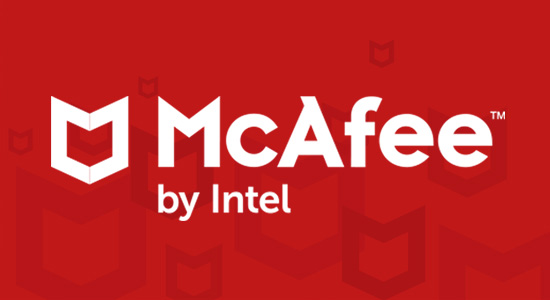Protection from virus, spam, spyware, and malware.
McAfee / Intel.
What’s New in Endpoint Protection
McAfee’s endpoint protection suites emphasize integration, automation, and orchestration as the foundation of the threat defense lifecycle. It harnesses the power of machine learning to detect zero-day threats in near real-time and streamlines the ability to quickly expose and remediate advanced attacks.
Detect zero-day malware
Unmask evasive threats by combining reputation analysis with new machine learning classification and behavioral modeling. Our endpoint protection stops most greyware, ransomware, and other advanced threats before they infect patient zero or spread to other systems. Dynamic application containment preemptively blocks suspicious files from using common malicious processes to shield the first endpoint and isolate the network from infection. Real protect offers static pre-execution analysis and post-execution dynamic behavioral analysis, leveraging machine learning classification from the cloud, to detect zero-day malware in near real time, without relying on traditional signatures.
Find and resolve threats in seconds
McAfee Active Response 2.0 exposes the unknown in seconds by tracing process behavior and then providing immediate context, via the cloud, to quickly convict and resolve threats. Reduce dwell times through real-time visibility, live investigations, and timelines. Use single-click correction to immediately remediate threats across a single endpoint or entire organization.
Stop threats before they reach the endpoint
Seamless integration with McAfee Web Gateway provides inline file emulation for suspicious web traffic. The cloud assisted edge defense analyzes the actual behavior of internet code and files to deliver pervasive endpoint protection both on and off the corporate network.
Top Reasons to Migrate to McAfee Endpoint Security 10
Better Performance
Customers with legacy Endpoint Security products are entitled to upgrade to the latest version at no extra cost. Improvements compared to McAfee Endpoint legacy products include:
- 48% faster initial on-demand scans
- 57% faster application launch
- 30% faster file copy
- 18% reduction in idle CPU utilization
Better threat remediation, intelligence, and forensics
McAfee Endpoint Security 10 takes control of the threat defense lifecycle with technologies that communicate utilizing McAfee Data Exchange Layer and McAfee Threat Intelligence Exchange to combat advanced threats and deliver actionable threat forensics—all in language you can easily understand. Integrated McAfee Global Threat Intelligence helps prevent malicious threats from occurring. The McAfee Endpoint Security platform also simplifies the delivery of future advanced threat protection and defense technologies allowing them to plug in and collaborate without requiring point product updates.
Legacy products consolidated into a next-generation platform
McAfee Endpoint Security 10 consolidates individual legacy products into Endpoint Security Threat Prevention, Web Control, and Firewall modules. The common architecture allows the protection modules to work together to provide improved security.
- Turn on only the modules you want and enable the rest whenever you’re ready.
- The 12 configuration policies in McAfee VirusScan Enterprise have been condensed down to five threat prevention policies.
- McAfee Host IPS protections are now included within the Threat Prevention module, as Exploit Prevention security.
Automatic Migration
Automatic migration is a hands-off process and the Migration Assistant makes all decisions behind the scenes. Customers create new policies and client tasks automatically, based on current product settings, and assign them to groups and managed systems based on current assignments.
Recommended for:
- Networks with fewer than 250 managed systems.
- Customers who use default policy settings or a minimum number of custom policies.
- Customers migrating the Host IPS Catalog.
Benefits:
- Requires minimal user input.
- Migrates all settings, including policies and client tasks, for each supported product at the same time.
- Retains policy and client task assignments.
- Migrates the Host IPS Catalog.
Manual Migration
Manual migration is a hands-on process that does not retain assignments. You make most of the migration decisions by selecting the objects to migrate and editing their settings, if needed.
Recommended for:
- Networks with more than 250 managed systems.
- Customers who use multiple custom policies.
- Customers who want to fine-tune existing policy settings.
- Customers who want to fine-tune assignments.
- Customers who want personally supervise and approve each step of the migration process.
Benefits:
- Allows you to select each policy and client task to migrate.
- Allows you to edit the settings for each policy or client task to migrate.

